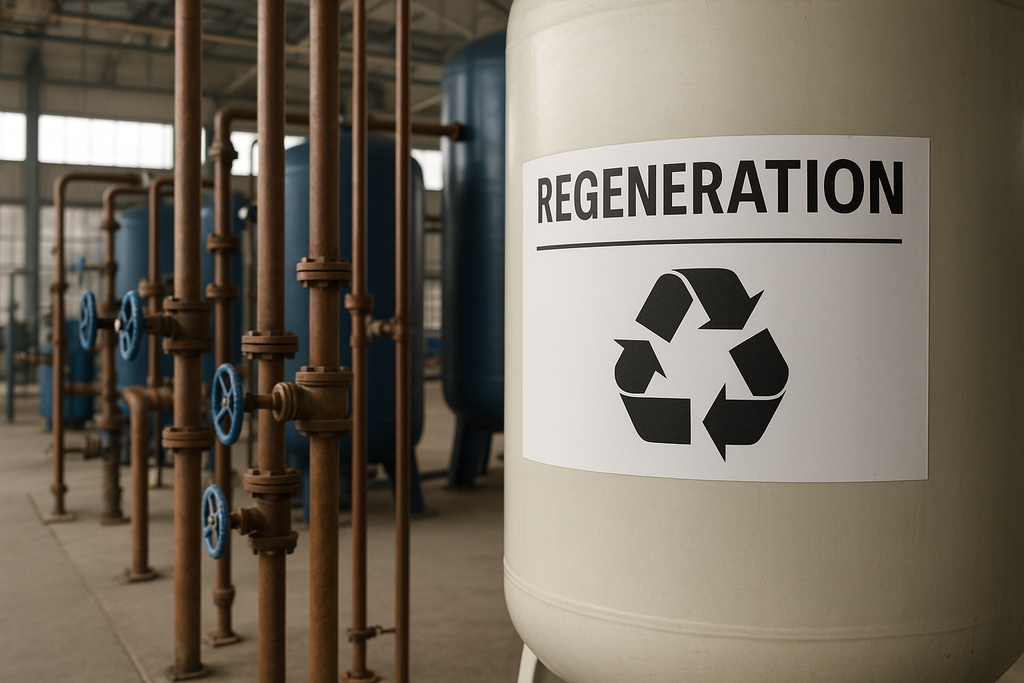Are Ion Exchange Resins Sustainable? Regeneration, Life Cycle & Environmental Impact
Are Ion Exchange Resins Sustainable? Regeneration, Life Cycle & Environmental Impact As industries and governments move toward more eco-conscious practices, water treatment solutions are under scruti

What Makes an Ion Exchange Resin Sustainable?
Unlike disposable filters or membrane systems that require frequent replacements, ion exchange resins can be used for years when properly maintained. Sustainability in resins depends on:
- Regeneration Efficiency: Ability to restore ionic capacity using minimal regenerant chemicals.
- Durability: High mechanical strength and resistance to fouling or attrition.
- Resin Reusability: Potential to recycle or reclassify exhausted resin for other applications.
- Low Chemical Footprint: Lower volumes of acid, base, or salt required during regeneration.
How ASHAION® Resins Contribute to Greener Operations
Our ASHAION® ion exchange resins are manufactured using high-purity monomers, optimized crosslinking, and advanced process controls to ensure consistent quality and minimal waste.
Here’s how they support your sustainability goals:
- High Exchange Capacity – Longer operational cycles reduce frequency of regeneration.
- Uniform Bead Size – Reduces channeling and ensures efficient contact with water, minimizing waste.
- Optimized Regenerant Usage – ASHAION® resins are engineered to achieve full regeneration with lower chemical dosages.
- Recyclable Packaging – We offer 25L and 50L HDPE drums with reusable liners.
Regeneration: The Heart of Resin Sustainability
One of the most sustainable features of ion exchange resins is their ability to be regenerated multiple times using common chemicals:
| Resin Type | Regenerant | Application |
|---|---|---|
| Cation Resin (Na⁺ form) | Sodium chloride (NaCl) | Water Softening |
| Cation Resin (H⁺ form) | Sulfuric acid (H₂SO₄) | Demineralization |
| Anion Resin | Sodium hydroxide (NaOH) | Silica or nitrate removal |
ASHAION® resins maintain their capacity over many regeneration cycles, reducing replacement frequency and waste generation.
Life Cycle of a Resin: From Factory to Reuse
Our resin life cycle philosophy ensures minimal environmental impact:
- Manufacturing – Efficient batch production, zero liquid discharge (ZLD), minimal emissions.
- Operational Use – Resin remains in service for several years with proper regeneration.
- Reclassification – Spent resins can be repurposed for non-critical applications like tertiary wastewater polishing or metal capture.
- Safe Disposal – Inert resin beads can be safely landfilled as non-hazardous material when no longer usable.
Comparing Resins to Other Water Treatment Technologies
Compared to RO membranes or disposable cartridge filters, ion exchange resins offer:
- Lower energy usage (no pressure required)
- Longer service life
- Lower operating cost per m³ of treated water
- Reusability via regeneration
That’s why many green-conscious industries — from food and beverage to electronics — rely on ion exchange as their go-to water treatment technology.
Supporting OEMs and Sustainability Officers
We work closely with OEMs and environmental compliance teams to recommend the right grade of ASHAION® resin based on:
- Raw water analysis
- Cycle time optimization
- Regeneration strategy
- End-of-life handling
Whether you're a WTP operator, industrial buyer, or consultant, we provide full documentation, including MSDS, COA, and performance validation data, to support your ESG reporting.
Conclusion
Sustainability is no longer optional. As water quality regulations tighten and operational budgets face scrutiny, choosing the right resin partner makes all the difference.
ASHAION® ion exchange resins by Asha Resins Limited offer performance without compromise — ensuring your water treatment processes are efficient, cost-effective, and environmentally responsible.
Let’s build a sustainable future, one resin bead at a time.
📞 Contact Us
Asha Resins Limited
www.asharesins.com/ion-exchange-resins
Email: sales@asharesins.com
Phone: +91 01169290611